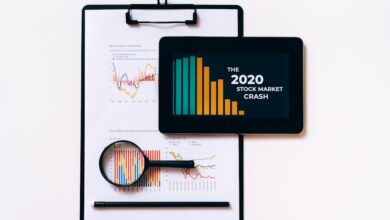Weathering the Storm: Understanding Recession Signals, Impacts, and Strategies for Resilience

As economic cycles ebb and flow, the specter of recession looms as a critical concern for individuals, businesses, and governments alike. Understanding the early warning signs of an impending economic downturn can empower stakeholders to make informed decisions, mitigate risks, and seize opportunities. This article delves into the multifaceted nature of recessions, examining how they impact various sectors of the economy and the shifting behaviors of consumers. We will explore effective investment strategies during turbulent times, the pivotal role of government stimulus in cushioning economic shocks, and the broader implications for global trade and supply chains. Additionally, we will reflect on lessons learned from past recessions and how they can guide businesses in preparing for and surviving future downturns. By navigating these challenges with foresight and resilience, we can better equip ourselves for the uncertainties that lie ahead.
- 1. **Recognizing the Red Flags: Early Warning Signs of an Economic Recession**
- 2. **Navigating the Downturn: Sector-Specific Impacts of Recessions**
- 3. **Resilient Strategies: Investing Wisely in a Recessionary Landscape**
1. **Recognizing the Red Flags: Early Warning Signs of an Economic Recession**
An economic recession is typically characterized by a significant decline in economic activity across various sectors, and recognizing early warning signs can be crucial for businesses, investors, and policymakers. Some of the key indicators to watch for include declining GDP growth rates, rising unemployment figures, and a contraction in consumer spending.
One of the most telling signals is a consistent decrease in consumer confidence, which often leads to reduced spending. When consumers feel uncertain about their financial future, they tend to cut back on discretionary purchases, affecting businesses reliant on consumer spending. Additionally, a drop in manufacturing output and retail sales can indicate weakening demand.
Another significant red flag is the behavior of the stock market. A prolonged downturn or increased volatility in stock prices can reflect investor apprehension about future economic performance. An inverted yield curve, where short-term interest rates exceed long-term rates, is also historically viewed as a precursor to recession, signaling that investors expect slower economic growth ahead.
Furthermore, rising levels of debt, both at the consumer and corporate levels, can strain financial stability. When debt levels become unsustainable, defaults may rise, leading to tighter credit conditions that further exacerbate economic decline. Monitoring these indicators can help stakeholders identify potential economic downturns early, allowing for proactive measures to mitigate adverse effects.
2. **Navigating the Downturn: Sector-Specific Impacts of Recessions**
Recessions have a profound impact on various sectors of the economy, each responding differently to the challenges posed by reduced consumer spending, tighter credit, and overall economic uncertainty. Understanding these sector-specific impacts is crucial for businesses, investors, and policymakers alike.
The retail sector often experiences immediate consequences during a recession, as consumers prioritize essential goods over discretionary spending. Retailers selling luxury items, clothing, and non-essential services usually see a significant decline in sales, while discount retailers may thrive as consumers seek more affordable options. In contrast, essential services such as grocery stores and healthcare typically remain stable or even experience growth, as these are fundamental to everyday life.
Manufacturing is another sector that can be heavily affected. A downturn often leads to decreased demand for manufactured goods, resulting in production cuts and layoffs. This sector's reliance on consumer confidence means that as spending declines, manufacturers may face excess inventory and reduced orders. Conversely, industries focused on essential goods, such as food production and pharmaceuticals, may see less volatility and can maintain operations more effectively during economic downturns.
The financial services sector is also significantly impacted. Banks may tighten lending practices during recessions, leading to reduced access to credit for consumers and businesses alike. This can exacerbate the downturn as businesses struggle to finance operations or expansions, further slowing economic recovery. On the other hand, some financial services, such as debt collection and restructuring advisory, may see increased demand as companies face financial difficulties.
The real estate sector typically experiences a slowdown during a recession, marked by declining property values and reduced construction activity. Higher unemployment and lower consumer confidence can lead to decreased demand for housing, making it a challenging environment for both residential and commercial real estate markets. However, this sector may also present opportunities for investors willing to capitalize on lower property prices.
Finally, the technology sector's response to a recession can be mixed. While some tech companies, particularly those focusing on non-essential services, may face reduced budgets from clients, others that provide essential technology solutions, such as cloud computing and cybersecurity, can actually benefit from increased demand due to the need for businesses to operate efficiently and securely in a challenging economic environment.
In summary, the impacts of a recession vary significantly across sectors, driven by consumer behavior, financial practices, and the nature of goods and services offered. Understanding these nuances allows stakeholders to better navigate economic downturns and identify potential opportunities or risks within their specific markets.
3. **Resilient Strategies: Investing Wisely in a Recessionary Landscape**
Investing during a recession requires a strategic approach to navigate the uncertainties of a contracting economy. Resilient investors often focus on several key strategies that can help preserve capital and potentially capitalize on market opportunities.
First, diversification becomes paramount. By spreading investments across various asset classes, such as stocks, bonds, and alternative investments, individuals can reduce their overall risk. During a recession, some sectors may perform better than others; for instance, consumer staples and healthcare often remain stable as they provide essential goods and services. Allocating a portion of the portfolio to these defensive sectors can help mitigate losses.
Second, investors should consider adopting a value-oriented approach. Recessions can lead to lower stock prices, presenting opportunities to buy fundamentally strong companies at a discount. Conducting thorough research to identify undervalued stocks with strong balance sheets and consistent cash flow can lead to substantial long-term gains once the economy recovers.
Third, maintaining a focus on liquidity is essential. During downturns, having readily accessible cash or cash-equivalents allows investors to take advantage of buying opportunities that arise when prices drop. This liquidity also provides a safety net in case of unforeseen financial needs.
Lastly, it’s crucial to remain patient and avoid panic selling. Market volatility can trigger emotional responses, leading to hasty decisions that hinder long-term investment goals. Staying informed and sticking to a well-thought-out investment strategy can yield better outcomes over time, even in challenging economic conditions.
By implementing these resilient strategies, investors can better navigate the complexities of a recessionary landscape while positioning themselves for future growth.
In conclusion, understanding the multifaceted nature of economic recessions is crucial for individuals, businesses, and policymakers alike. By recognizing early warning signs, we can better prepare for the inevitable impacts on various sectors of the economy. Effective investment strategies tailored to recessionary conditions enable investors to navigate these challenging times with greater resilience. Additionally, government stimulus plays a vital role in cushioning the blow, fostering recovery, and supporting consumer confidence during downturns.
Consumer behavior shifts significantly during economic crises, influencing spending patterns and overall market dynamics. As we observe the ripple effects on global trade and supply chains, it becomes evident that no economy operates in isolation. The lessons gleaned from past recessions remind us of the importance of adaptability and foresight in both personal and business finances.
Ultimately, proactive preparation is key. Businesses that implement strategic measures to weather economic storms not only survive but can also emerge stronger in the recovery phase. As we move forward, leveraging these insights will be essential in navigating future economic uncertainties, ensuring that we are equipped to face the challenges that lie ahead.





